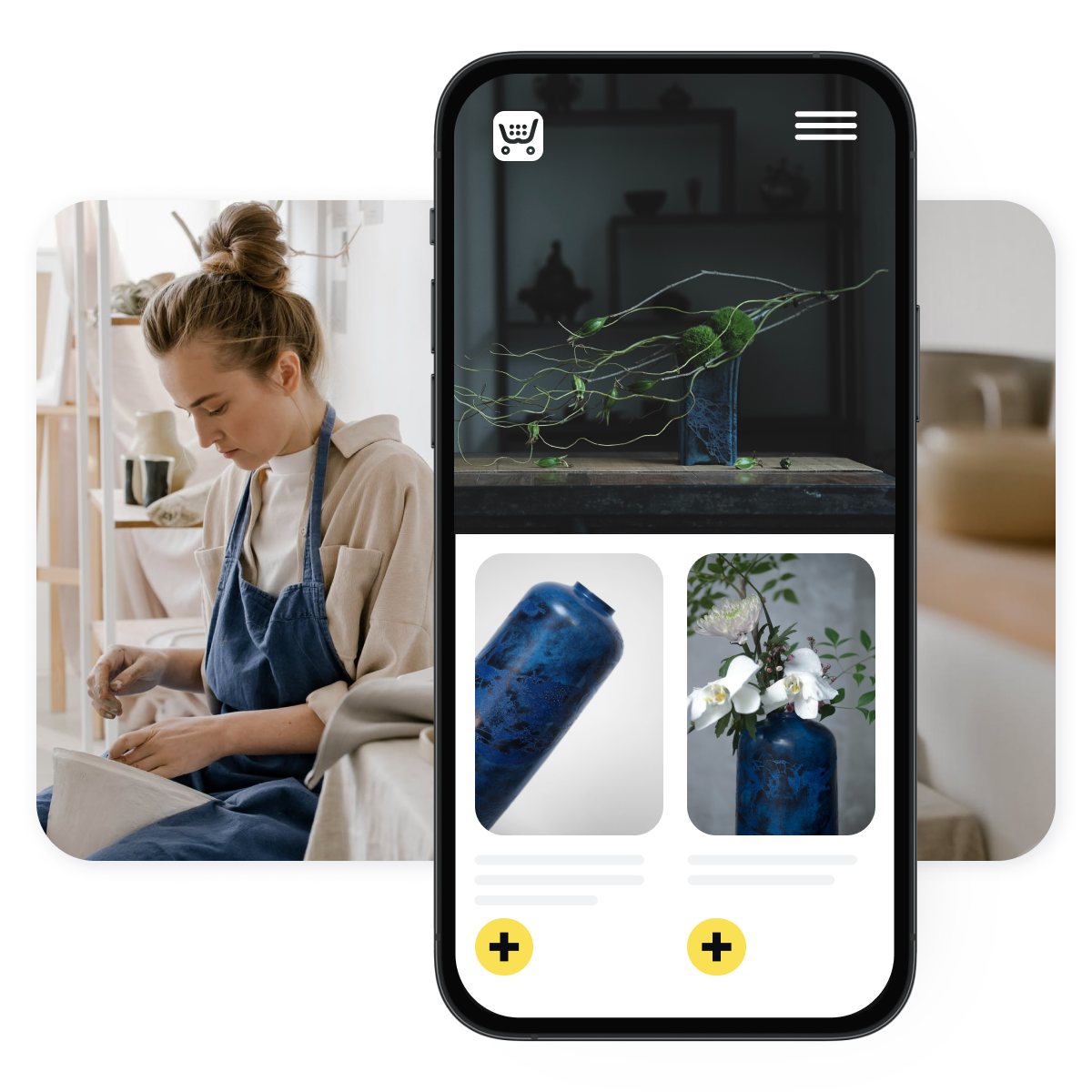If you’re considering selling your products in person at an event like an art show or craft fair, don’t expect to be able to wing it. You need a plan in place so you don’t end up wasting a whole weekend lugging around a bunch of inventory that nobody buys.
There are three stages to work through if you want to properly plan for these types of selling
Let’s start with the
Pre-Event Stage: Planning for Art Shows and Craft Fairs
Before committing to booth rental at an art show or craft fair, you need to be sure that the event is both relevant and financially logical for your business. That means doing some initial research.
Note: Craft fairs like Renegade have an application process that begins far before the event. Start planning early!

Learn about the event’s audience
You want to be sure that your offerings are going to be relevant to the people attending the event, so find out details about the demographics of attendees. The event organizer will have some of this information, but it’s a good idea to check with past vendors, too. Find out:
- How many people attend on average each year?
- Are they mainly men or women?
- What’s the common age range of attendees?
- What’s the average spend per customer?
You’ll be better suited for success when you’re certain that the audience for this event falls within your target market.
For example: You probably wouldn’t want to get a booth at a craft fair that’s mainly for
Estimate your expenses
You also need to calculate what it will cost for you to set up at the event to ensure the investment makes financial sense. Tally up costs you’ll incur, including:
- Travel time and expenses (gas, hotel, meals)
- Booth fee
- Application fee
- Setup costs (displays, tent rental, decorations for your booth)
- Packaging
- Setup fees associated with a POS for processing credit cards (if you don’t have one yet).
This part is especially important if you’re selling
Once you’ve decided on a craft fair or art show that makes sense for your business, it’s time to plan out your booth so you can attract many customers and sell more goods.
Planning Stage: Prepping Your Setup
Your booth is a representation of your brand
If you’re not sure how you want your booth to look, explore photos from past years of the event to see what other vendors put together. Pinterest also has a lot of great images you can browse that will help you come up with creative displays and themes for your booth.

Friendly reminder: You don’t want your booth to feel cluttered or too empty, so try to find a balance between the two.
Pack Up the Necessities
Once you’ve prepared your booth’s different elements, you can group everything together in an easily movable storage bin (with wheels, if it’s heavy) to make loading and unloading easy. Items might include:
Well-stocked inventory, with multiples of every product- Decor for your tables, displays, banners/signs
- Signs/tags that clearly indicate prices
- Pens, scissors, and tape
- A way to collect email addresses from customers
- Business cards
- Packaging for sold items
- Water and snacks
- Tent rental, if not provided
- Mirrors, so customers can evaluate items that can be tried on
- Cash, change, and a credit card POS system, plus a way to record total sales
With everything neatly organized, you can simplify the setup and
Get Some Help
It’s always a good idea to have someone come along with you at an event so that the booth is always supervised. If you attend alone, it can be tough to find a good time for bathroom breaks and
After the event wraps up and you’re back at home, it’s time to reflect on the experience so you can do even better at the next art show or craft event.
Post-Event Stage: Evaluation
It’s important to take time to sit down and really think about the event after it’s over, and to make notes on what worked well, what didn’t work, and how you felt about the experience overall. You should be able to answer questions like:
- Did you make a worthwhile profit from the event?
- Did you gather valuable feedback from customers?
- Was the location/demographic a good fit for your business?
- How did your prices compare to your competitors’ within the marketplace?
- Did you forget anything?
As you evaluate, you’ll have a better idea of how to proceed with similar events moving forward. You might find that in the future, you’d like to try out different events, or that the one you attended was extremely successful for your business.
Art Shows and Craft Fairs: Everything You Need to Know
Art shows and craft fairs can be a great way to get in front of new customers for your online or brick and mortar store, but remember: You need to plan ahead. Follow the three stages outlined here, and you’ll be taking a strategic approach to all your events in the future.
Discover DIY craft ideas and learn how you can sell them online.
- How to Start a Handmade Brand and Sell Crafts
- DIY: Things You Can Make and Sell Online on Your Own
- 8 Hottest Craft Ideas to Make Money From the Internet
- Art Shows and Craft Fairs
- DIY Craft Ideas to Make and Sell








